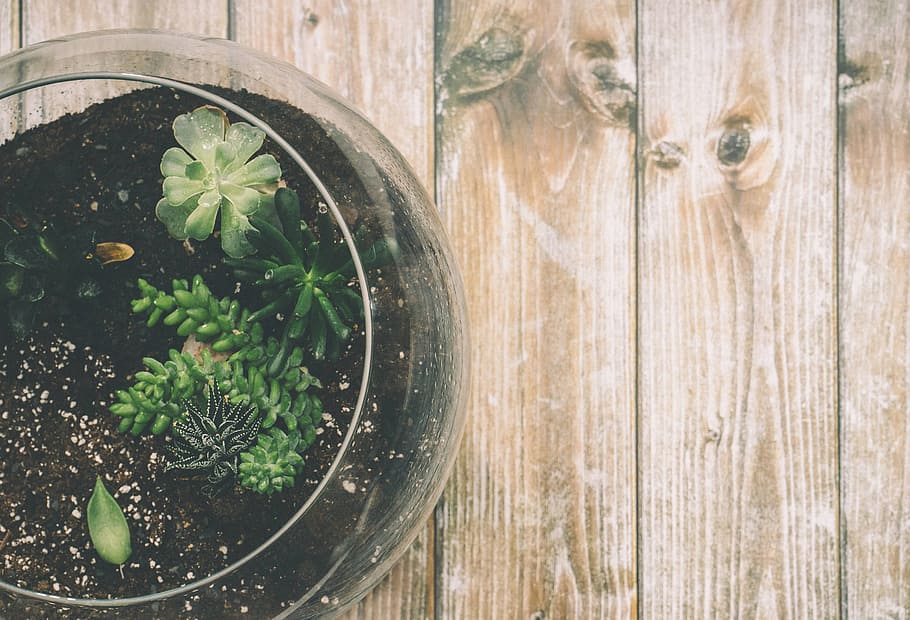
Marissa Gallant & Suzanne Hauerstein
New England Botanic Garden at Tower Hill Staff
Do you love houseplants but don’t have the space? Do you seem to turn all your greenery to brown? Try this no fail craft for adding a bit of horticulture to your home.
A traditional terrarium serves to create a miniature ecosystem in a glass structure, perfect for your desk, your bookcase, or your dresser. Meaning ‘place of earth’, a terrarium is a type of vivarium, or enclosed structure used to house plants or animals. Terrariums-both living and non-can come in all shapes and sizes and can be created with items you have in your home or natural curiosities you find on your next outdoor adventure. Try our non-living terrarium craft to hone your skills and put your creativity to the test. Feeling ambitious? Try challenging yourself to create an open or closed live terrarium next!
You will need:
- Glass jar or clear plastic container
- Assorted natural materials
- Small toy or action figure
- Marbles, sea glass, sand, moss
To begin, select the perfect jar. Mason, pickle, or jam jars work great! No glass containers? Use a plastic storage container or grab a clear plastic soda bottle and cut the bottle in half, using the bottom half for your terrarium. Once you have selected your jar or bottle, clean and rinse your container. Soak in warm soapy water to remove the labels and glue. Stubborn glue? Use Goo Gone to remove the extra residue. Let your container dry, gather your remaining supplies, and follow the simple steps below to create your own miniature terrarium!
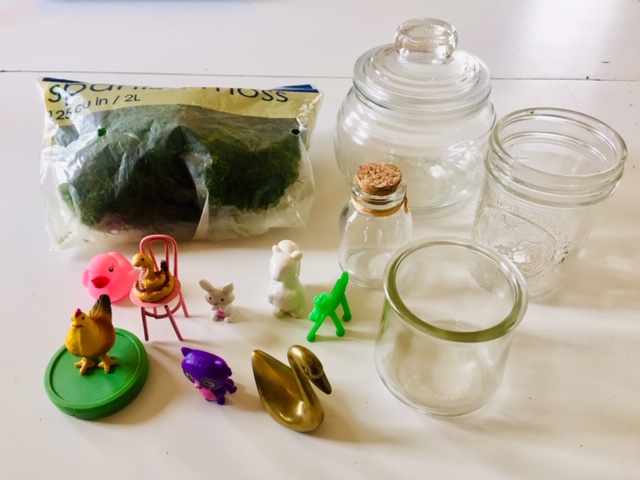
Take a walk outdoors to collect your natural materials. Bring along a bag and hunt for interesting natural objects. Small pieces of bark, twigs, rocks and pebbles, dried leaves, acorns, seed pods, pinecones, and seashells, are all great options! Whatever you choose, remember to leave no trace and select materials that are the right size for your terrarium jar.
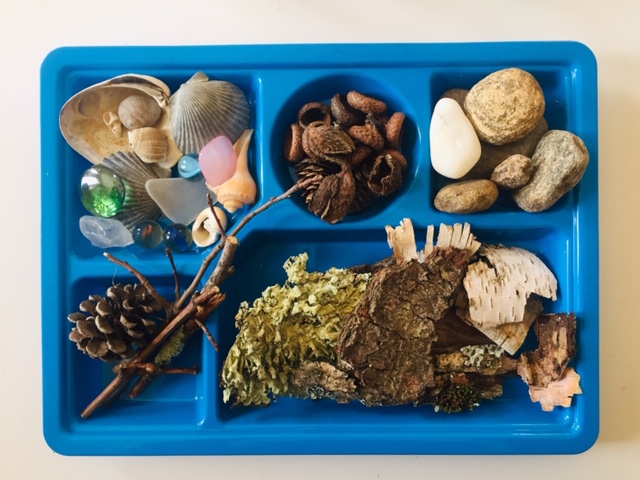
Head back inside and think about how you would like your terrarium to look-is it a desert or beach scene, a wooded area, or a magical world you have dreamt up? Sketch your design, plan out the materials you will use and their placement, and add labels to your drawing.
Once you have a design, you are ready to build! Start by adding your base. Rock, sand, bark or moss are all great options.
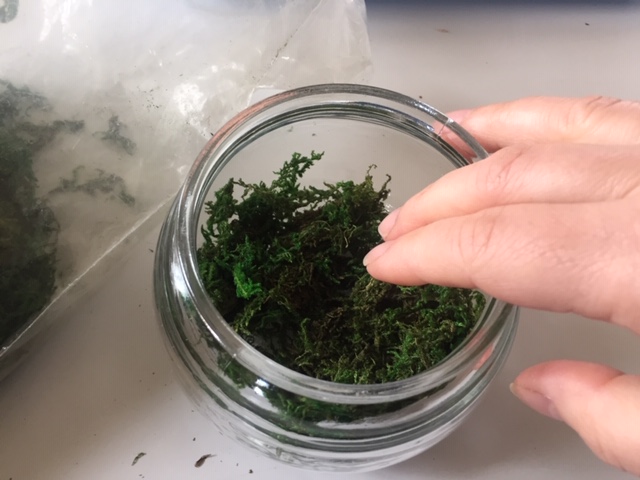
Next add your larger items such as pinecones, stones, twigs, and marbles. Continue to add your remaining materials, rearranging as you go.
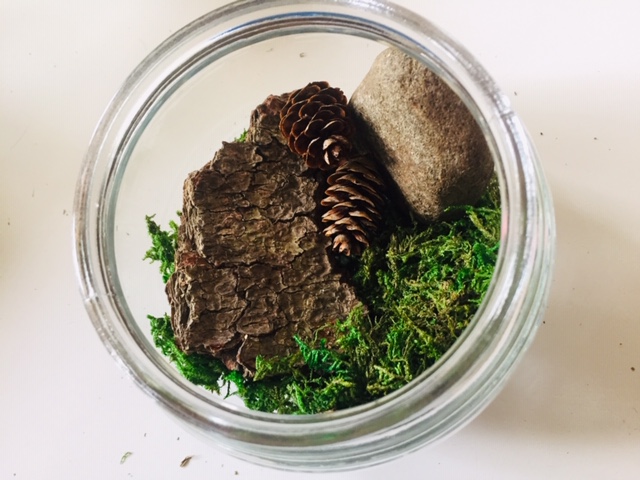
Once you are satisfied with your design, add in your figurine and give your terrarium a bit of personality.
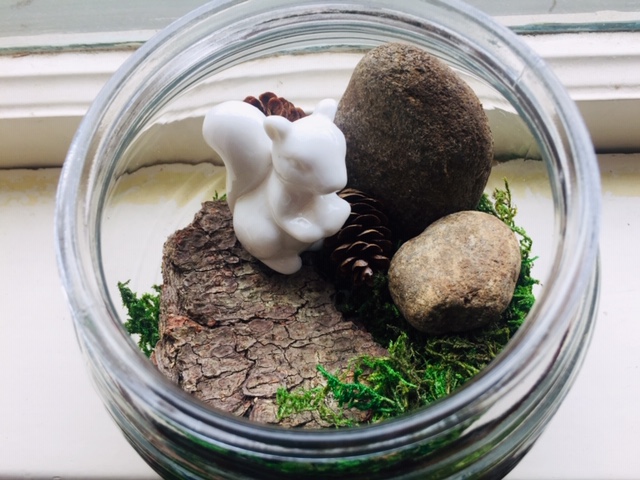
When you are finished find the perfect spot to display your terrarium-no watering necessary!
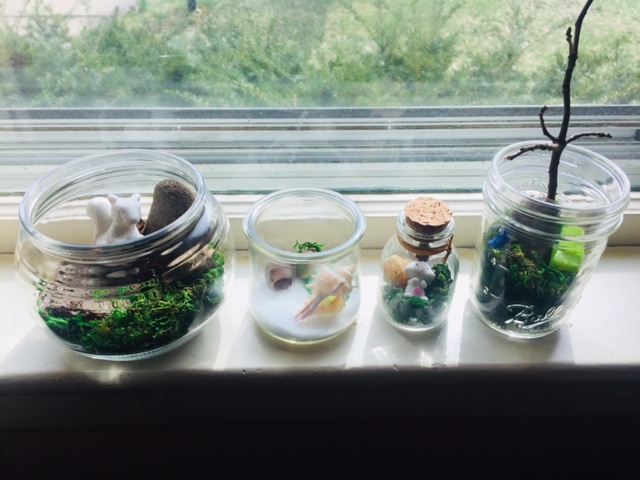
Tips and tricks
Have a tillandsia or air plant at home? Add your plant to your creation to make a living terrarium. Don’t forget to continue with your regular watering schedule!
Feeling ambitious? Ready to try a live terrarium? Open succulent or cacti terrariums are a great place to start and are often easier to maintain than sealed versions. Begin by lining the bottom of your jar with about an inch of gravel, pebbles, or small stones. Succulents prefer dry environments and the layer of rock provides valuable drainage that prevents the plants from developing root rot, a common side effect of overwatering.
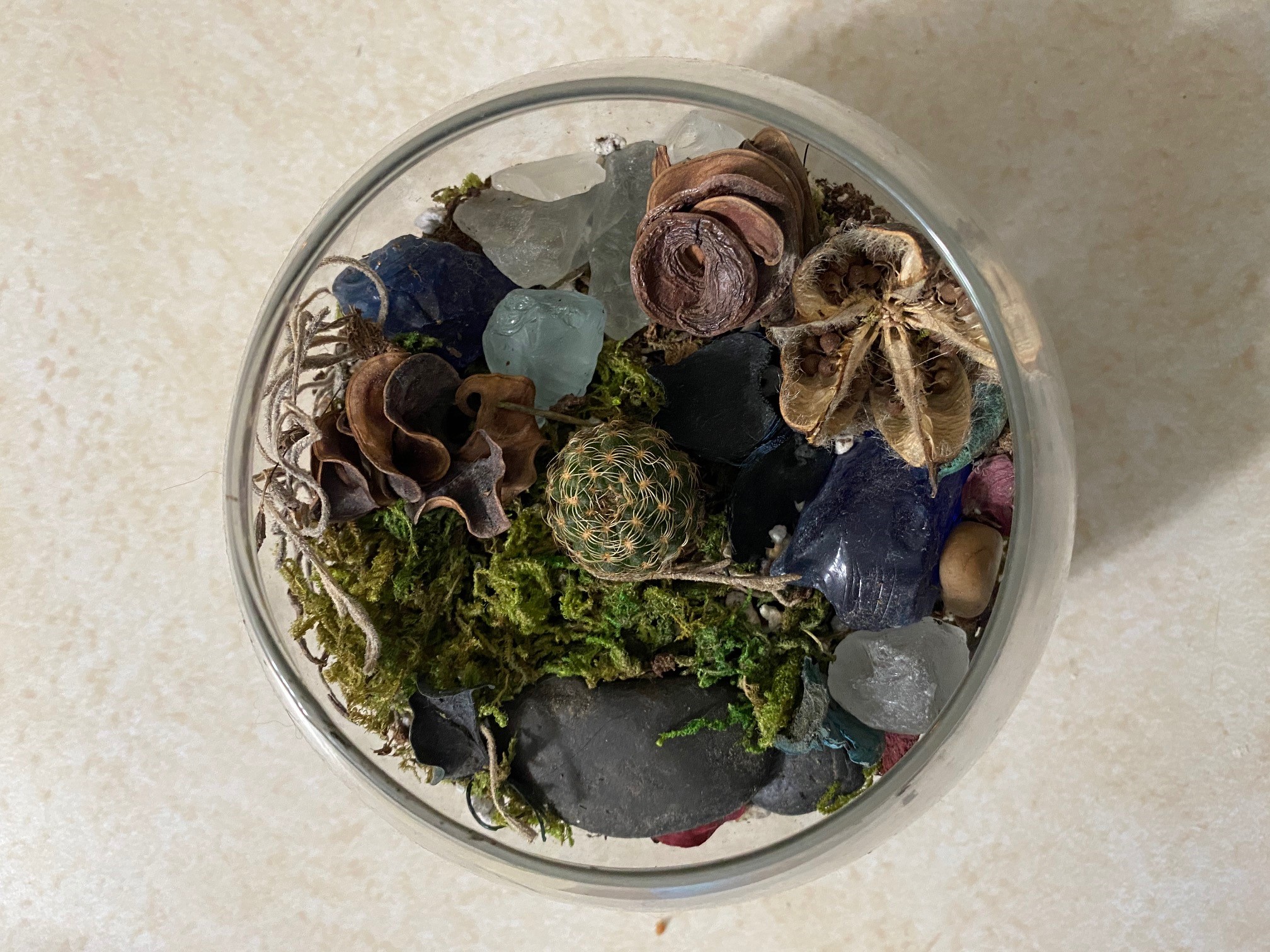
Follow with a layer of potting soil. Cacti and succulent soil is best, but regular potting soil will do. Remove your succulents from their pots, massage the roots, and pot up in your terrarium. Decorate as desired, place in a sunny window, and watch your miniature ecosystem thrive!
What masterpieces will you create?
